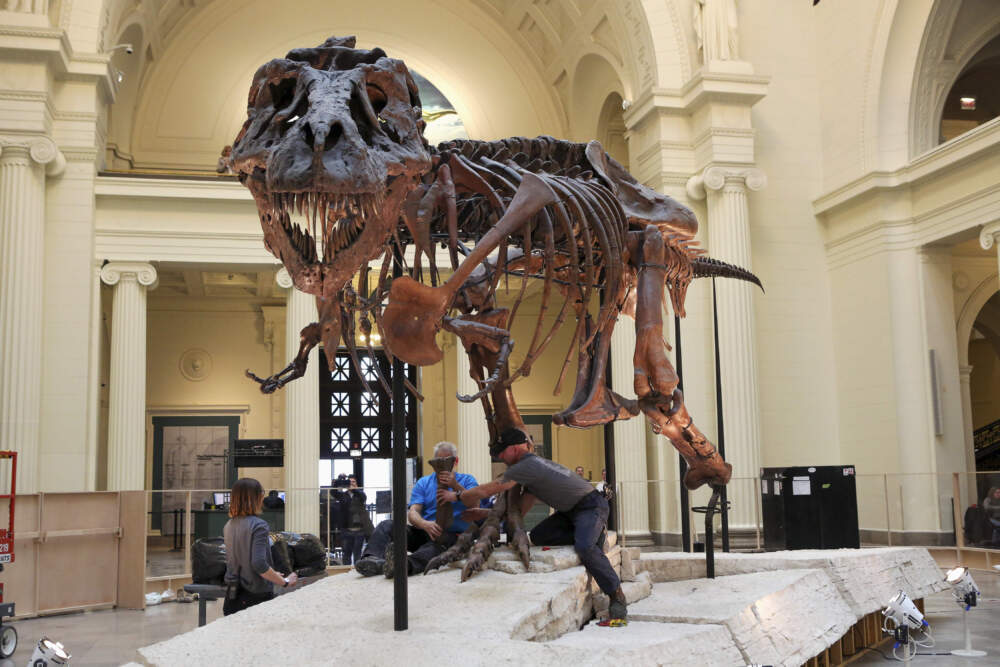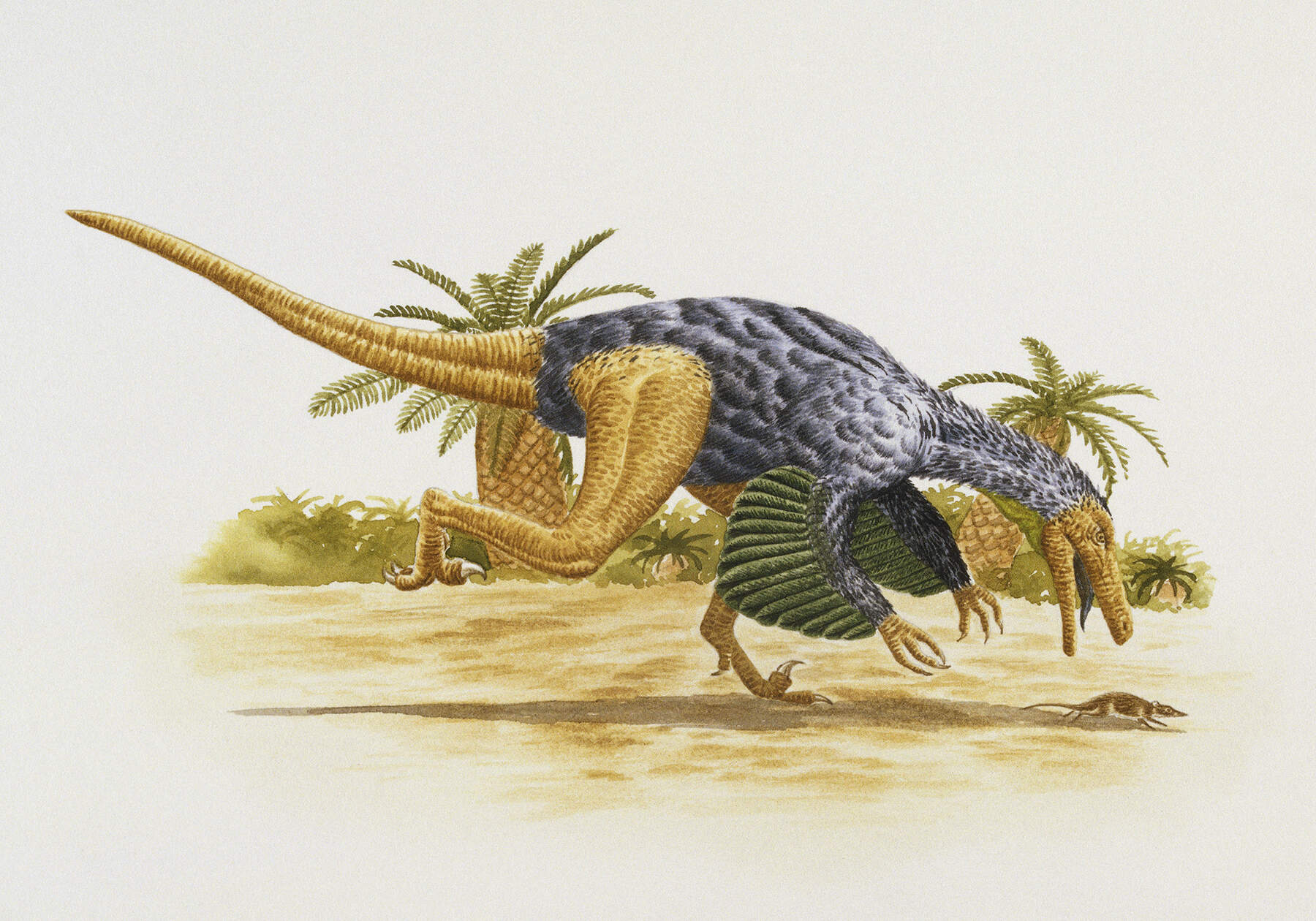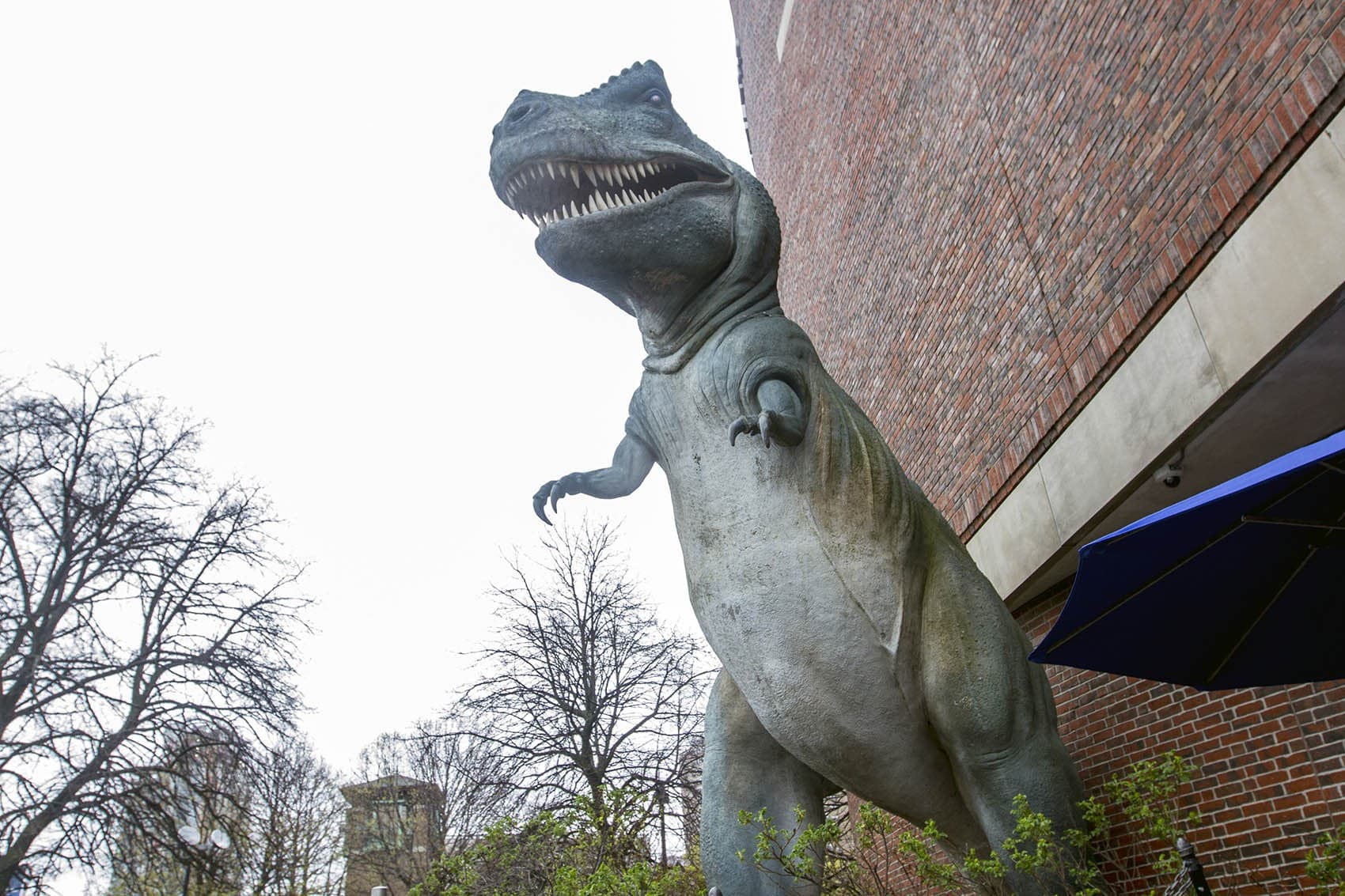Advertisement
Field Guide to Boston
Celebrating 200 years of dinosaur research — and how local scientists helped change paleontology
Resume
Two hundred years ago, an English geologist named William Buckland found a fossil unlike anything he’d ever seen. He called it "Megalosaurus" and thought it belonged to a large lizard.
Little did he know he’d discovered the first of a group of animals that still fascinate us today: dinosaurs.
We’re celebrating the bicentennial of this discovery and how much New England has contributed to the growing study of paleontology with Mark McMenamin, professor of geology at Mount Holyoke College, and Eugenia Gold, assistant professor of biology at Suffolk University.
Interview Highlights
On how the view of dinosaurs has changed over the decades:
Gold: "[The view] has changed quite significantly since the '70s. We know that their portrayal back then was slow and sluggish and [with their] tail dragging. And we know now that they were much more active creatures — that they held their tails off the ground. Many of them had feathers and some of them could fly. So our our pictures of these things have changed quite a bit."

On dinosaurs presence in New England:

McMenamin: "They are definitely present here in the New England bedrock. The most complete skeleton is the Anchisaurus polyzelus from the Springfield area, and there are certain to be more of them in the ground.
"An Anchisaurus polyzelus is a sauropodomorph dinosaur. We might call that a precursor then to the great sauropod dinosaurs that come later in the Jurassic and in the Cretaceous [periods]. [The] creature was about 7 feet long. It walked on all fours and could rise up on its hind legs."
On the process of learning dinosaur characteristics from fossils:
Gold: "Well, a couple of ways. So we find the bones in the ground, and the rocks can tell us how old that rock layer is so we know when it lived. We know that it lived because we find its body parts, and then we can compare it to closely related dinosaurs based on different features of different bones. We can figure out where it sort of fits in the evolutionary tree of life and figure out aspects about its biology through different features of its bones and who it's related to."
On if the New England region was home to unique types of dinosaurs:
Gold: "So in the late Triassic, we're having a lot of environmental changes. The continent — the supercontinent of Pangaea — is starting to rift apart, and that's going to cause a lot of landform changes, which then change the climate around that landform.
"So the Triassic was generally warmer and had different types of plants and river systems that supported different types of creatures. So it really just depends on what the rocks are showing us and what the landscapes were like. With this rifting [it is] going to cause these seasonal changes in climate that's going to change what sorts of animals were around.
On where you can see dinosaur fossils and learn more:
Gold: "So if you want to stay really local and just escape this winter weather, you could go to the Harvard Museum of Natural History. You could go to the Museum of Science. Both of those have pretty good dinosaur and other fossil creature displays. That's where I would start if you wanted to be very local. Also, the Natural History Museum at Amherst College has some of our New England native dinosaurs there."

McMenamin: "I do encourage everyone to visit the Beneski Museum on the Amherst campus. They've just done a fantastic job there with highlighting fossils from our area, particularly in the basement where we have the Hitchcock trace fossil, or ichnofossil collection. That is just chock full of really interesting dinosaur tracks, including the Pliny Moody track that was discovered in 1802 and was the first discovery of any kind of dinosaur material in North America. That's usually on display at the Beneski. I think that right now it's out for research at another institution, but it will soon be back to be seen on the Amherst campus."
This segment aired on February 12, 2024.

